#i also think this is illustrated by pablo marcos?
Explore tagged Tumblr posts
Text
Character ask: Beth March (Little Women)
Tagged by @princesssarisa. Thank you so much for this, as I love her and have a lot of feelings about her that I want to share.
Favorite thing about them: She is the kindest character in the whole book, and this turns out to be her biggest strength. She may be so shy to the point that talking to people outside her family is extremely difficult, but she doesn't let that stop her from helping those who need it, whether it's helping the Hummels when the baby is sick with scarlet fever, or talking to Frank to try and cheer him up. And this has an enormous impact: everyone adores her, to the point that they all miss her when she first gets sick, and make sure to show her how much she means to them when she's on her deathbed. She may not have "achieved" anything like her sisters do, but she still matters, and that means so much to me.
Least favorite thing about them: When she tells Jo to take her place after she dies. Like... Beth, sweetheart, no. No one could ever replace you. And Jo doesn't need to be more like Beth to be worthy of love. The fact that Mr. Laurence says something similar after he returns from Europe with Amy and Laurie doesn't help, either.
Three things I have in common with them:
*I've always been really shy and awkward, and tend to mostly keep to myself.
*I love music.
*I always try to be kind and help people as best I can.
Three things I don't have in common with them:
*I do want to get married and leave the house someday.
*I'm not much of an animal person.
*I can't play the piano, but I would like to learn how.
Favorite line: Once again, there are many, but I'll try to keep it simple.
When she starts to overcome her fear of Mr. Laurence for the grand piano:
"I'm Beth. I love it dearly, and I'll come, if you are quite sure no one will hear me and be disturbed."
When she gently calls out Meg in the way that only she can:
"You said the other day that you'd be perfectly happy if you could only go to Annie Moffat's."
When she commends Amy for her behavior with the rich girls and once again shows that she's not an impossibly perfect saint:
"Yes, we all do, and love her for being so ready to forgive. It must have been dreadfully hard, after working so long, and setting your heart on selling your own pretty things. I don't believe I could have done it as kindly as you did."
And finally, her reaction to Jo's poem about her:
"Then I don't feel as if I'd wasted my life. I'm not so good as you make me, but I have tried to do right, and now, when it's too late to begin even to do better, it's such a comfort to know that someone loves me so much, and feels as if I'd helped them."
brOTP: Her sisters, especially Jo, as well as Mr. Laurence. (I also feel like in crossover land, Lucy and Frodo would absolutely adore her, and vice versa.)
OTP: None.
nOTP: Mr. Laurence, or any member of her family.
Random headcanon: She's either on the autism spectrum, has social anxiety, or both, and her angelic image is an attempt to not be a burden to her loved ones and to try and make up for the fact that she can't mask.
Unpopular opinion: If any of the March sisters are aromantic, it's Beth, not Jo. Beth never wants to get married or have children, and Jo does change her mind about that after a while, which I guess might rub some people the wrong way. This isn't to say that you can't have whatever headcanons you want, but this makes more sense to me. Also, I don't normally say stuff like this, but if you think that Beth "needs to die" just because she's not a normal girl, you're ableist, plain and simple.
Song I associate with them:
"Stuck Inside a Cloud" by George Harrison.
"April Come She Will" by Simon and Garfunkel.
"marjorie" by Taylor Swift.
Favorite picture of them:
These illustrations by Pablo Marcos Studio:
With Mr. Laurence:
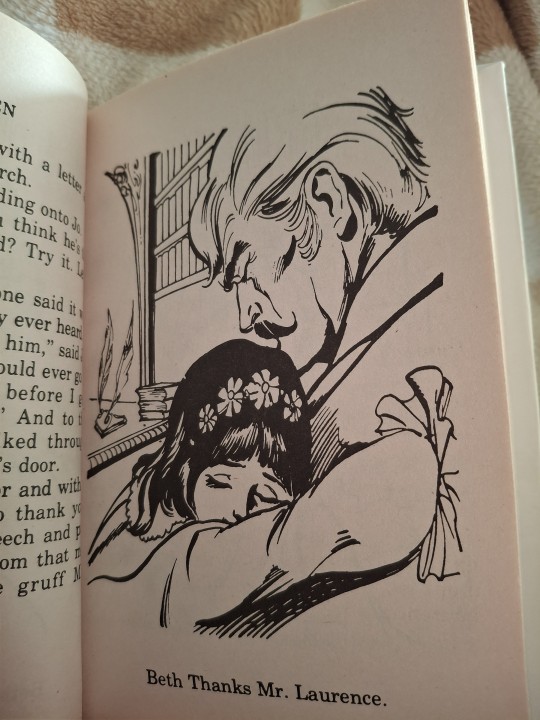
As the postmistress:
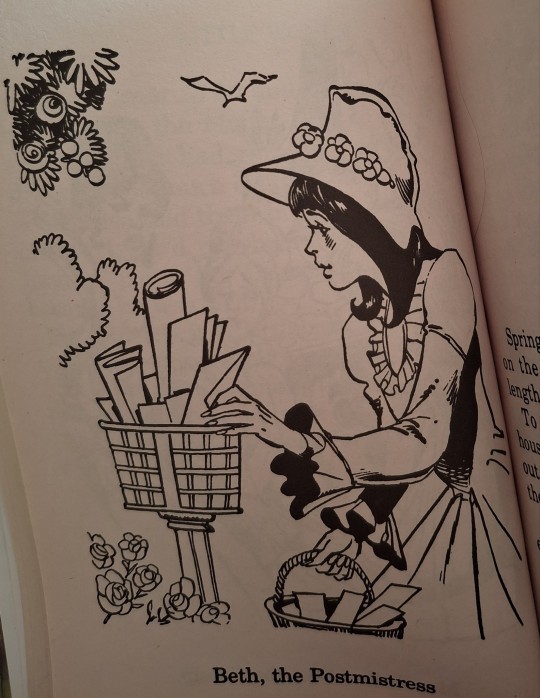
When she gets scarlet fever:
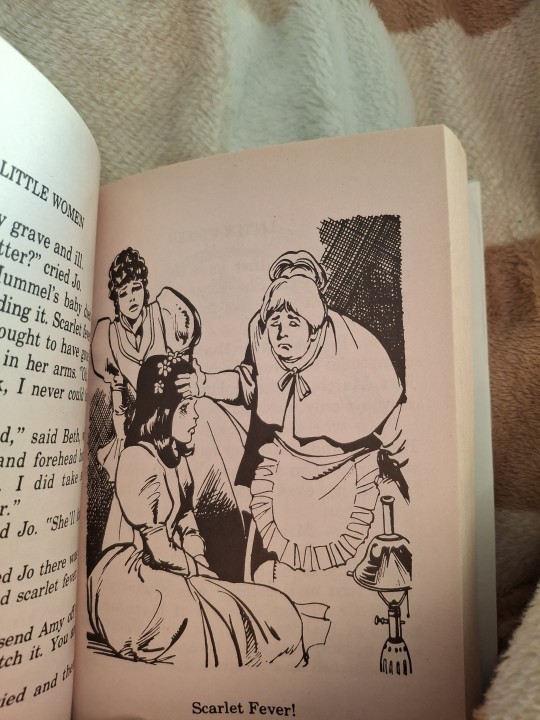
The snow maiden:

With Jo, before she reveals her doom:

With Jo at the seashore during THAT scene:

The last time we see her in this version:
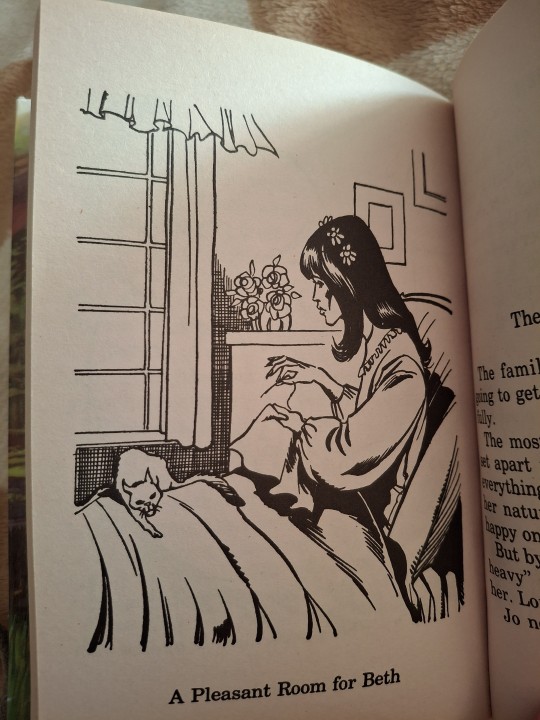
These illustrations by Michael Adams:
With Mr. Laurence (this version is more affectionate):

With Meg and Jo watching over her on her sickbed:

This black and white illustration of her with her cats on her (first) sickbed:

#ask game#fictional character ask#beth march#little women#again#thank you so much!#Hopefully I did okay#I couldn't do any movie pics#because I haven't seen any#and there wasn't any room#but I love her regardless#🥺#♥️
9 notes
·
View notes
Text
Krista by Pablo Baen Santos
Pablo Baen Santos was born in the year 1943, in the Philippines and is considered to be one of the major figures of the Social Realist movement as one of the founders of the Social Realist Art Group ‘Kaisahan’, in 1976. His early years in the arts began during is training under the University of the Philippines, College of Fine Arts. During the Marcos Era, Santos worked as an illustrator for one of the leading Philippine newspapers called, ‘Manila Time’. In an interview with Pristine L. De Leon, Santos recalls how being an artist at that time was merely for the matter of surviving and not because the market had been oblivious to the work that they (social activists) did (Leon, 2018). To Santos, during his time, there was no such thing as what we would coin an “art market”, however because his works were directed towards the socio- political injustice the Philippine community was facing, as such those who were in power were always watching. It came to a point the artist states in the interview that living as an artist became dangerous as suddenly news of disappearances served to threatened artists who were very vocal about their socio- political standpoint, of which opposed the Marcos Regime. From this, we can foresee that his artworks would be intertwined with the state of the Filipino society.
Experiencing the Marcos Regime first hand, socio-political climates are what primarily influences the works of Santos. In particular, having been at the forefront of the fight for democratic freedom in the Philippines, he exhibits a wide array of works that scream ‘social injustice’– he figuratively and literally paints such images to voice out to his audience such a strong emotional impact that aims to inspire them to stand up to such injustice. His works are recognized for its consistent theme that highlight the plight of the rural and urban poor that reflected the socio- political climate of that time. While his works at the get go convey a message of fighting for democratic freedom and standing up to social ills that plague the Filipino nation, Santos admits to also using his artworks as hints about his personal concerns on the negative perception drawn towards artists and art in society, in ways this could be reflected through his concept of ‘minority vs. the powerful majority’.
Pablo Baen Santos’ Krista translated as ‘Female Christ’ was created in the year 1984 as an oil painting on canvas and was gifted to the Ateneo Art Gallery by the artist himself. It is a large-scale painting, done in portrait that depicts a woman with a crown of barbed wire tied around her mouth, seemingly gagging her, however with clenched fists. Surrounding her are what seems to be a sea of people in agony based on the expressions, some even seemed to be dead. On the upper half, it paints nationalistic feel, with the Philippine flag as well as two men with their fists up, in a fighting stance position.
Deciphering the title, Krista, we immediately think of the Filipino word Kristo which is Christ in English, but then ending with ‘a’ give it a more feminine touch which fittingly would be equivalent to the translation of ‘Female Christ’. Santos wittingly uses word play to pay homage to both the idea of inang bayan or motherland (this argument is further strengthened by the flag in the background) and the strong influence of Catholicism in the Philippines. By doing so, he invites the audience to become more inquisitive, slowly connecting the different elements of the piece such as the barb wire which is most commonly associated with Christ’s crucifixion. This image of the woman then begins symbolize so much more than a woman gagged with barb wire, but projects the symbol of the Philippine nation and it’s intense suffering, similar to that of the crucifixion of Christ but hints the idea of strength through clenched fists (seen as a symbol of defiance) , caused by the abusive power of that era. In short, Santos aimed to create a symbol to show how the Philippine nation (Motherland) was being ‘crucified’. Behind the female subject, you can see people as mentioned before who were in agony similar to the main female subject. It gives you the sense of emotion seeing so many faces in agony, making you sympathize with the female who seems to be tortured.
Studying the elements of the Krista, we are able to pinpoint that the main ones used were color, line, shape, form, and texture. The lines in Krista are mostly diagonal curvy but with some edges, it also plays with a lot of irregular more organic shapes used to form the images of the humans and the flag. The purpose was to use it to create a sense of feeling, in particular agony and as well as to play with movement. The combination of these lines constructs the more irregular organic shapes of the subject on the painting. Santos, uses colors that were relatively selective and simple, choosing them to be not too pale but also not too bright just enough to visualize the painting, however it is important to note his heavy use of shade using black. He uses brown and primarily warm neutral colors for the main subject as it is what is usually used to convey the idea of a living object. He uses a combination of light and dark browns to embody this sense of both a full yet dull look to the painting. It may be due to the idea Santos delivers of how the lady or the motherland as she symbolizes is alive shown by the fullness, yet is slowly dying due to the torture and pain it is experiencing hence, the dullness. Santos makes use also of some primary colors for the flag to paint the nationalistic. While also providing a contrast to the predominantly brown main subject. Among all the elements, Santos may have used texture most effectively, and I say this as it is what brings life and emotion, and creates this emotional connection with the audience. Due to his specific blending technique of the black color throughout the whole painting, it makes the painting appear very unrefined (natural) and firm (due to ridged blending strokes). This generates the feeling that Santos may have intended to convey which is essentially the embodiment of humans in pain.
While many say that when the Marcos’ rule ended so did social realism, as such making works like these less relevant to society and its happenings, I believe otherwise. This work may have been created during the Marcos era and with the purpose of awakening the nation to standup against social injustice, Santos’s work may be viewed on a larger scale not merely in the context of just the Marcos era. Looking at the Krista, I was immediately drawn by the unique way Santos conveyed emotion through the elements of the piece. Furthermore, how witty he is in terms of intertwining the various rich cultural aspect of the Philippines along with the title and symbols thrown across the piece. And while Santos aimed to use this as a form of expression during the time of oppression of his time, I see this piece as something that may represent social unjust that destroys a nation in general. And in light of recent events, with corruption, abusive power, and Philippine politics in such a complicated state, this piece becomes a mirror of what had once happened in the past. This makes it so much more relevant in my opinion even to the future generations, so long as social injustice exists within the nation, the lady in the forefront of this piece will always represent the abused. In addition, while the traditional way of appreciating art would be through its elements and classical idea of the combination of elements, I see this work, despite not following this to be much more significant due to the impact it provides its audience, which will not disappear so long as someone in society remains to relate to the feeling of pain and agony.

Title: Krista
Artist: Pablo Baen Santos
Year: 1984
Type: Oil on Canvas
Size: 90 cm x 121 cm
Source: Leon, P. (2018, February 25). Pablo Baen Santos, Antipas Delotavo, & Renato Habulan: On the aftermath of conflict. Retrieved July 14, 2020, from https://www.philstar.com/lifestyle/arts-and-culture/2018/02/26/1791256/pablo-baen-santos-antipas-delotavo-renato-habulan-aftermath-conflict
1 note
·
View note
Photo
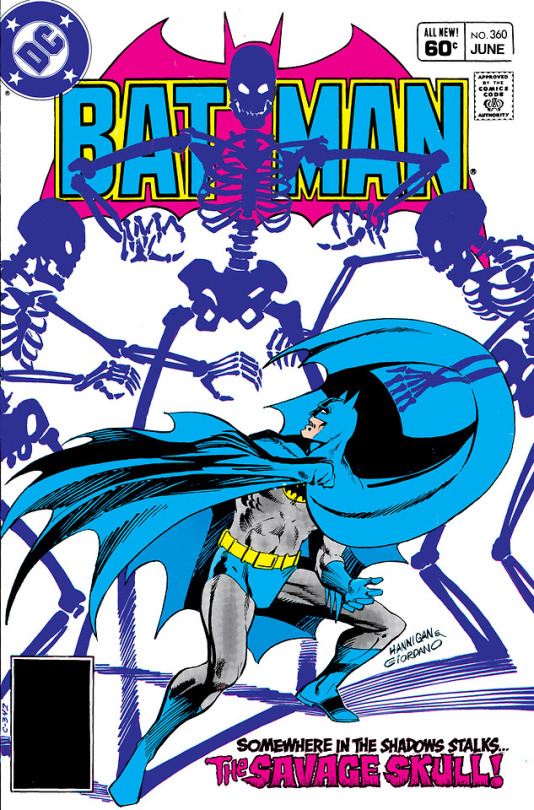
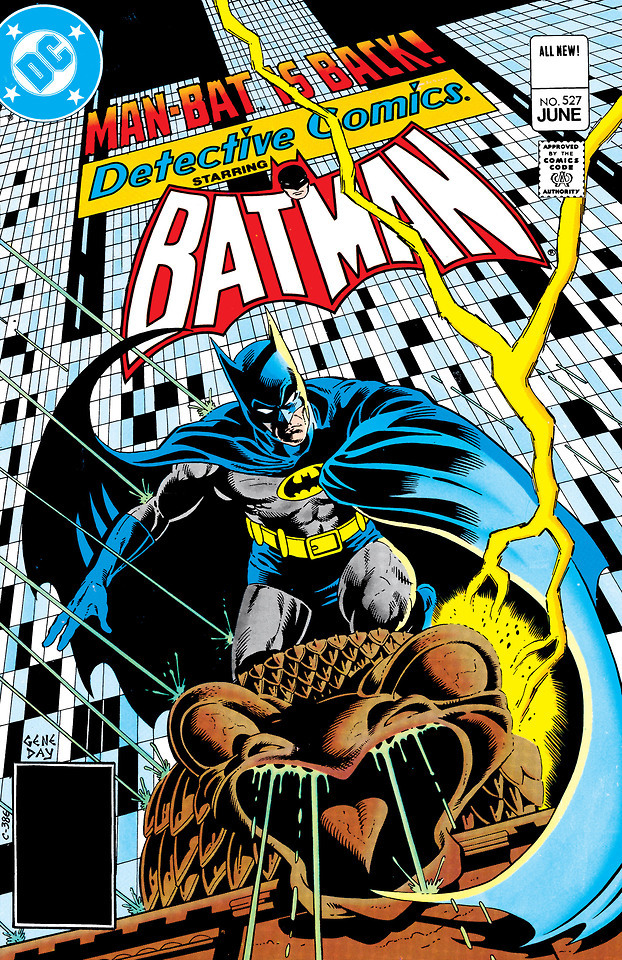
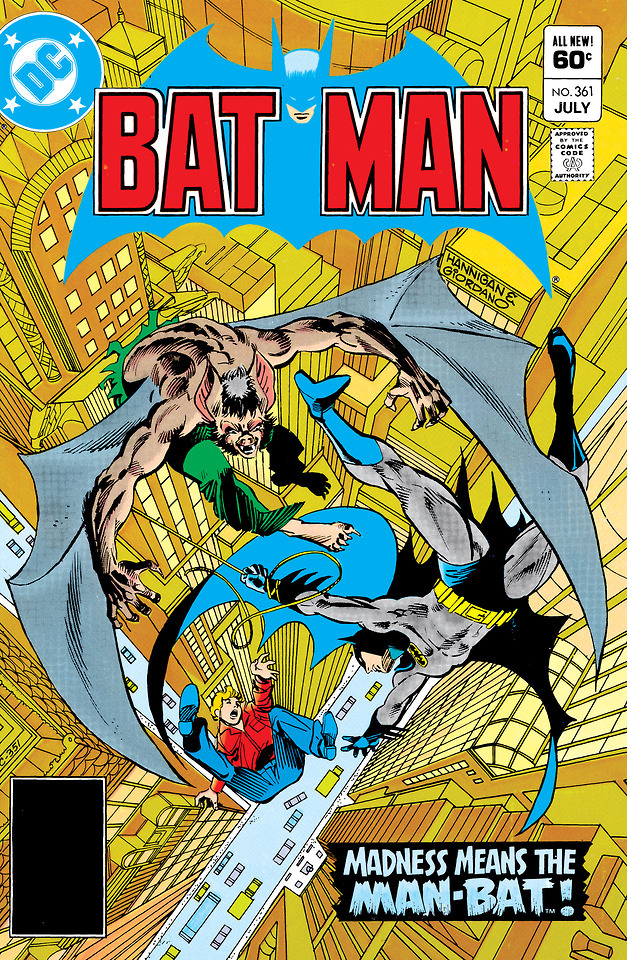
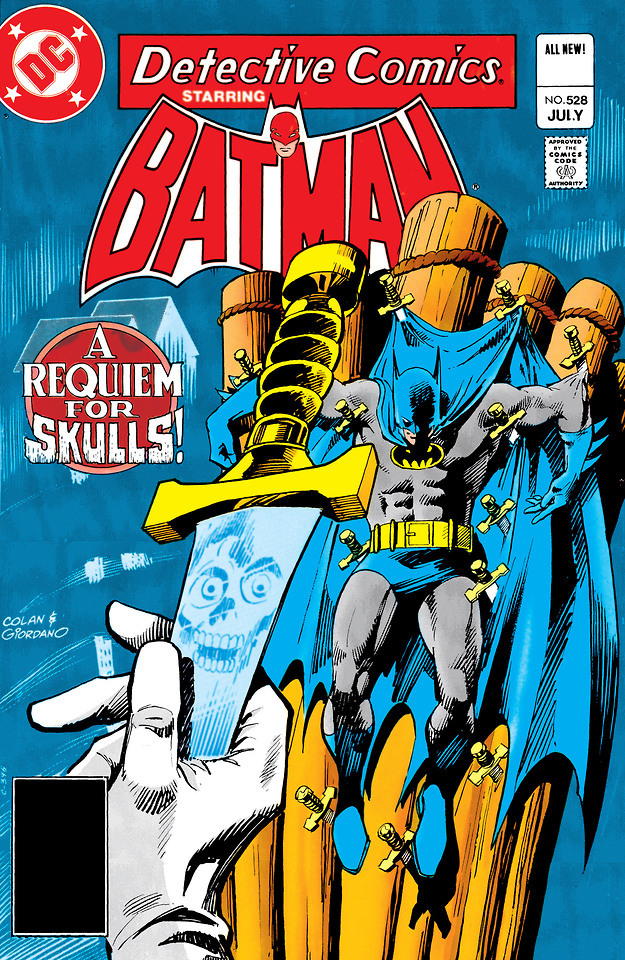
BATMAN #360-361, DETECTIVE COMICS #527-528 JUNE - JULY 1983 BY DOUG MOENCH, DON NEWTON, DAN DAY, GENE COLAN, KLAUS JANSON, PABLO MARCOS AND ADRIENNE ROY
SYNOPSIS (FROM DC DATABASE)
Two police officers have been murderer in Gotham City and a third victim managed to survive the attack of a new serial killer on the loose.
Meanwhile, it's been a month since Bruce Wayne has become Jason Todd's guardian and the kid has been training hard, hoping to become the next Robin; and idea that Batman doesn't like. After their training session, Batman is contacted about the recent murders and he summons the Dark Knight to interrogate the only survivor.
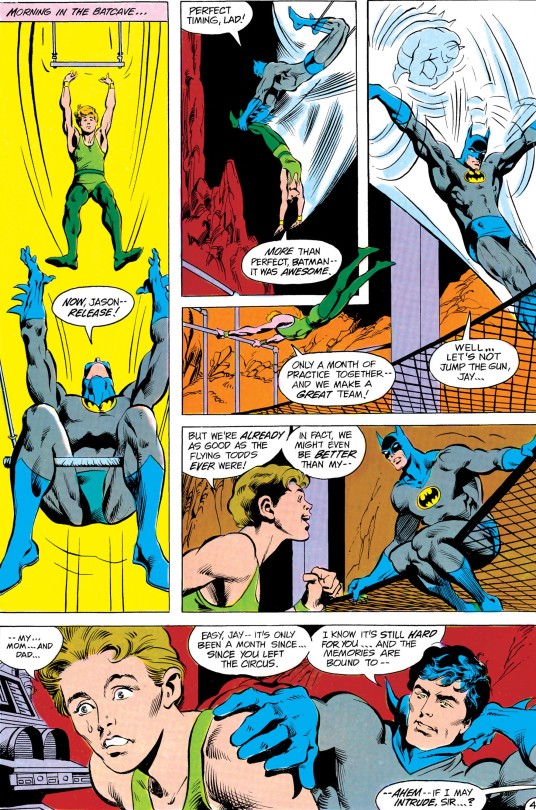
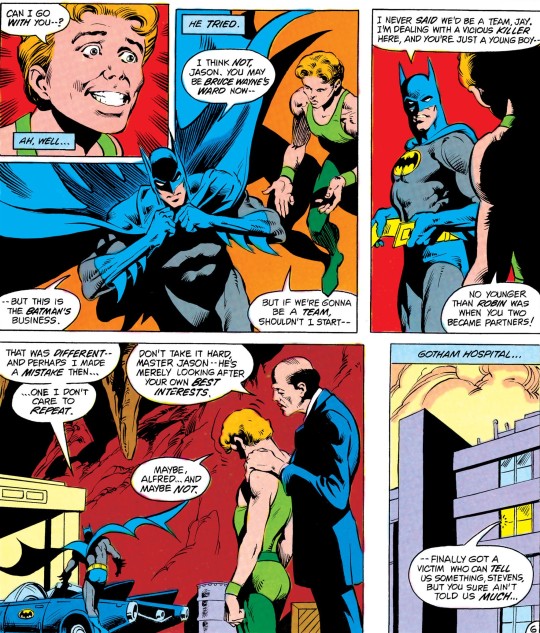
The police officer can't remember details about the attack and Gordon provides Batman with a list of police officers that share similar background to the victims. Like this, Batman starts investigating all the possible victims, without a clear answer. However, one of the officers he interrogates mentions a former partner, who shares a similar background, but that no longer works as a police. After learning about Jack Crane, Batman goes to interrogate the former police officer, but the man who provided the information is soon attacked by the serial killer.
Batman finds Jack Crane's home and upon entering, he realizes it is the place of the serial killer, who now calls himself Savage Skull. From looking at the place, Batman learns that the former officer has a hit list and the last man on the list is Commissioner Gordon. When Skull returns home, he confronts Batman, but is unable to defeat the Dark Knight and instead chooses to escape with the murder weapon that he will use on Gordon.
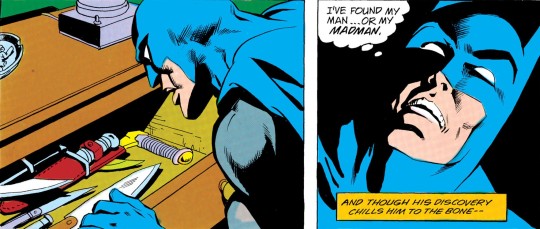
Batman rushes to Gordon's home, where he finds his friend alive and well, except for medical complications that have started with the age. Batman informs Gordon about Crane and his new identity as Savage Skull and he tells Batman about Crane's past and the reason why he was removed from the force after a terrible incident, in which he lost his face skin. Despite his tragedy, Crane was still found guilty because of the use of excessive force. Batman finally deduces that Crane is out to kill all the officers who denied him his rights and has set out to murder them.
At that moment, Savage Skull breaks into Gordon's house and Batman immediately attacks the killer, taking the fight outside. After a brief chase, Batman confronts Skull near the river, where Skull acts out of desperation and jumps againt Batman, who dodges the attack, forcing Skull to plunge into the river. With the killer gone, Batman asks Gordon to tell his men to drag the river and find Savage Skull.
Robert Langstrom has been working himself too hard back at his old job at the Gotham Natural History Museum. His drive has been so strong that Langstrom forgot to take the antidote that prevents him from changing into Man-Bat. For this reason, Langstrom once again turns into Man-Bat, and his madness returns, believing that all his problems are caused by Batman.
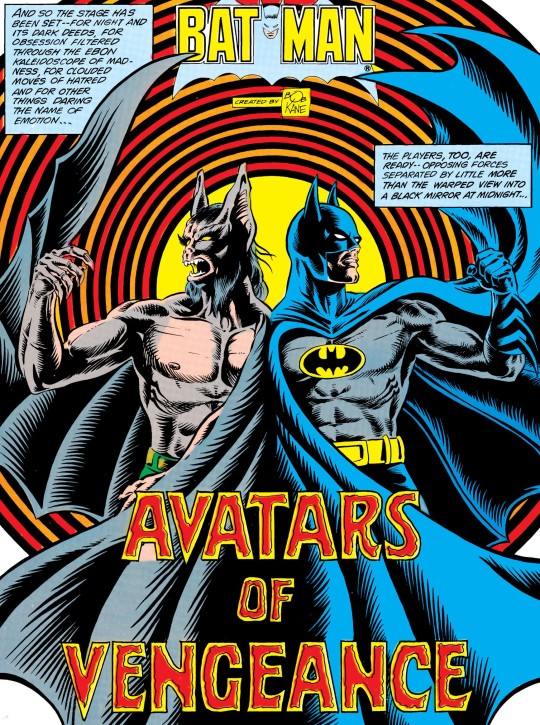
Meanwhile, Commissioner Gordon has not being able to locate the body of Savage Skull and Mayor Hill is giving Gordon a hard time for the lack of results. Noting Gordon's declining health, Hill decides to give Gordon and assistant, a person who will make things worse for the Police Commissioner.
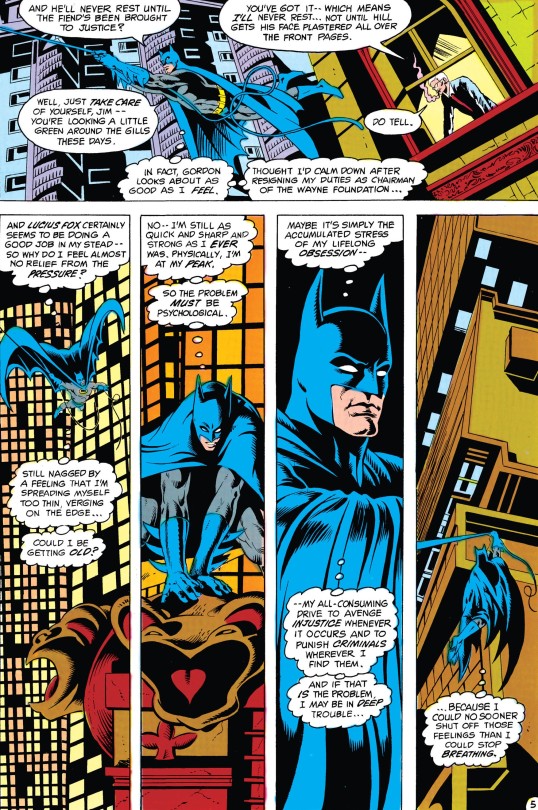
At Wayne Manor, Jason Todd asks Bruce to go out to see a movie at night and unable to deny the kid such request, Bruce is forced to cancel a date with Vicki Vale, who is not too happy about the situation.
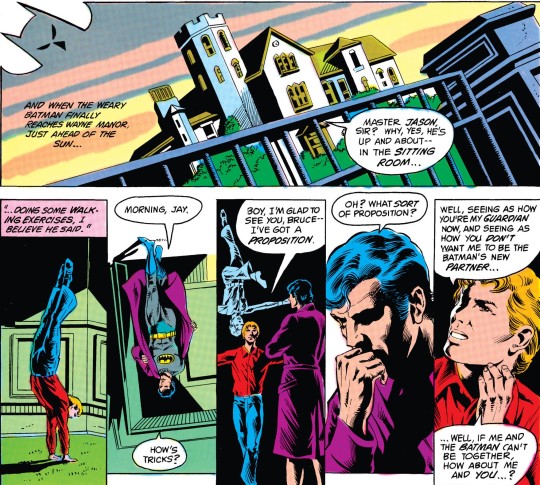
At night, Bruce and Jason prepare to go out, but Man-Bat has returned to the Batcave, the same place where he last confronted Batman. Making his way to Wayne Manor, Man-Bat strikes and Bruce goes into action as Batman. The struggle is taken back to the Batcave and Jason follows them, hoping to help in any way. When Man-Bat gets the upper hand on the fight, Jason attacks the monster, saying something about his "father". Man-Bat realizes that there is a connection between Batman and the kid, and he kidnaps the boy to make Batman suffer in the same way as he had suffered after the loss of his daughter. Batman realizes that Man-Bat has lost his mind once again, but the kidnapping of Jason makes him lose his temper and vows to find and kill Man-Bat once and for all.

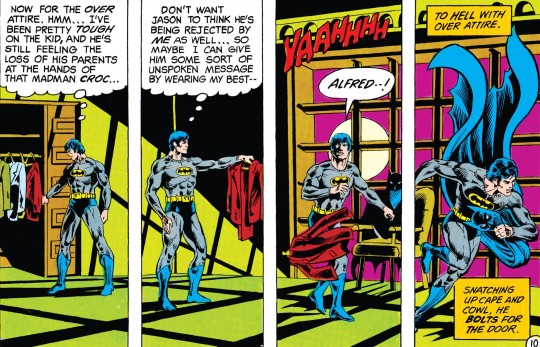
Jason Todd has been kidnapped by Man-Bat, who expects to transform the kid into a bat like him, in revenge against Batman for "taking away his daughter". After the abduction, Batman starts looking in the caverns nearby the Batcave, knowing that Man-Bat is already long gone.
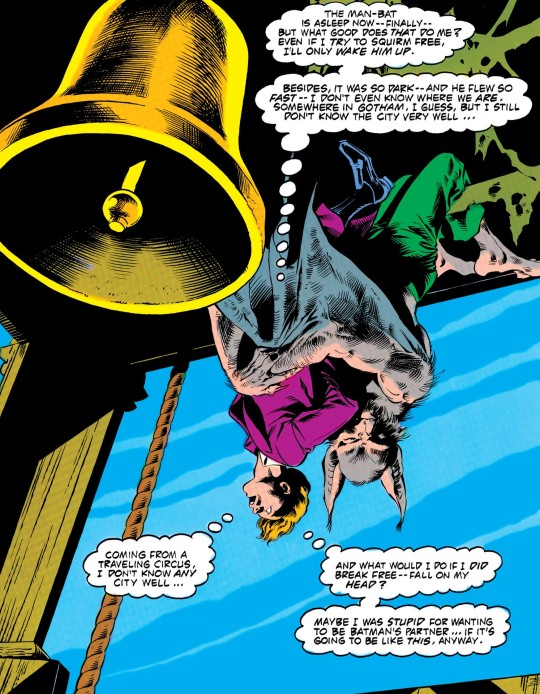
In fact, Man-Bat has taken Jason to a small town near Gotham, where the townsfolk become aware of Man-Bat's presence in the church's belltower. When the Gotham City Police Department arrive to investigate the "monster", Mat-Bat flies away with Jason and one of the officers fire his weapon, creating a big explosion in the nearby gas station. The fire attracts Batman, who picks up Man-Bat's trail.
Moments later, Batman visits Francine Langstrom and asks her assistance to help her husband. After explaining the situation, Bruce contacts Vicki Vale and asks a favor, which would help him against Man-Bat.
Meanwhile, the monster has taken Jason to the basement of the Gotham Natural History Museum, where he starts preparing a new strain of Man-Bat Serum to turn Jason into one like him. Batman eventually finds Man-Bat at the museum and after a brief confrontation in the upper floors, he descends to the basement laboratory, where Batman uses cardboard cutouts of Francine and Rebecca Langstrom with a recorded tape of her voices. The shock of the images and sound combined, make Man-Bat unstable and Batman takes the chance to attack. A struggle starts once again and knowing that Batman might need assistance, Jason breaks free from his bonds and attacks Man-Bat from behind, giving Batman the chance to inject the antidote on Langstrom and returning him to human once more.
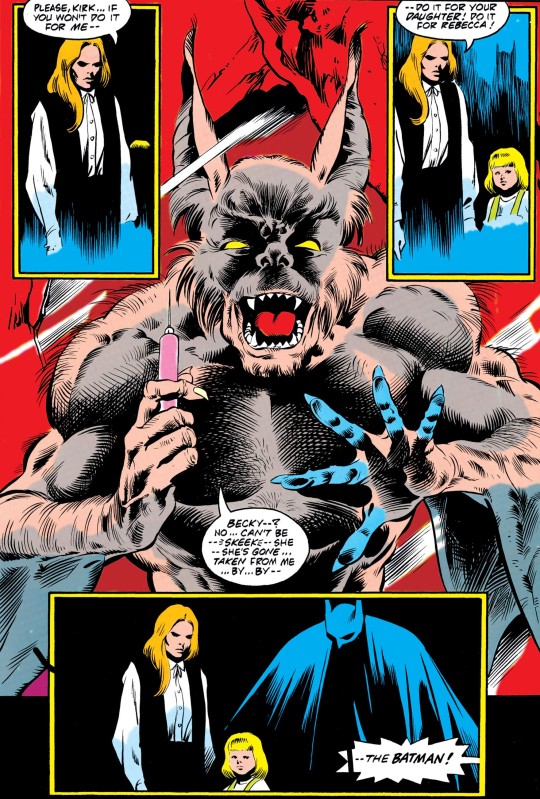
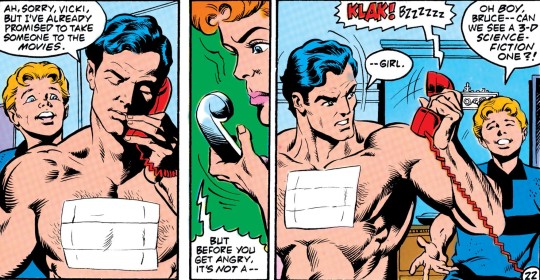
After these events, things seem to be going normal for almost everyone, except Commissioner Gordon, who learns that Mayor Hill has assigned him a new assistant and it is none other than Harvey Bullock.
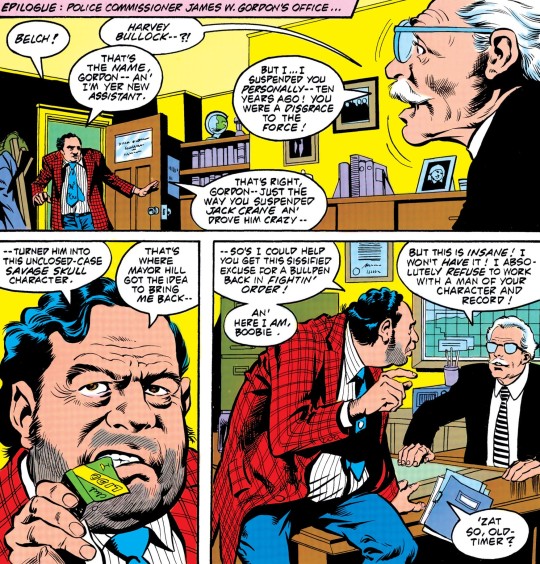
As the new Assistant Commissioner, Harvey Bullock re-opens the case of the Savage Skull and he sends members of the Gotham City Police Department looking for the criminal. As expected, Skull is still alive and he murders yet another police officer.
The next day, Mayor Hill summons Commissioner Gordon to discuss the recent events and how bad the whole situation looks for him. Back at the GCPD Headquarters, Gordon is unable to concentrate as Bullock has taken control of his offices and he takes the lead on the investigations. At night, Gordon is visited by Batman, who gives him words of encouragement and after their "pep talk", Gordon uses Bullock's notes to crack the case.
Later, Bullock goes to an abandoned building that was formerly used by the GCPD to train young officers. As Bullock deduced, Skull is waiting inside and he attacks Bullock, despite their former friendship. Gordon arrives in time to save Bullock, but as a result, he is stabbed in the shoulder. At that moment, Batman appears and confronts the Skull, who challenges Batman to a hand-to-hand combat. The fight is pretty even, but in the end, Batman defeats the killer, allowing Bullock to arrest the criminal, while Batman takes Gordon to receive medical assistance.
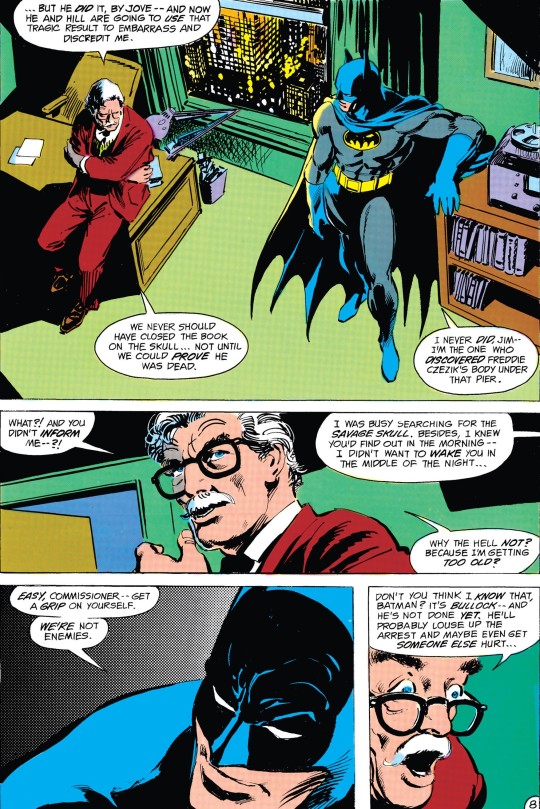
The next morning, Harvey Bullock summons a press conference to inform about the capture of Skull, but the takes the chance to bash against Gordon, making him look bad in the eyes of the entire city.
REVIEW
And this is how Doug Moench’s (first) Batman run started. I think it’s a good start, he is warming up with a detective story, some character arcs, political intrigue, and a crazed villain. Bringing back Bullock is just a bonus (it’s hard to remember that Bullock wasn’t a good cop).
The art is getting darker and darker. The issue illustrated by Dan Day made me check twice that it wasn’t Paul Gulacy.
And speaking of that issue, I used to have the spanish version of it, signed by Denny O’Neil. Wasn’t perfect though, he got my name wrong and he signed again in the interior :p
Thanks anyway, Denny ;)
Bringing back Gene Colan is also a very pleasant surprise. I know this is the last part of the pre-crisis Batman, and it includes some of the first Batman stories I ever read.
Now, let’s talk about Jason Todd. Gerry Conway did a good job introducing the character, but here... it feels a lot like a Dick Grayson replacement (I think many adaptations and later retellings of Grayson’s origins, include the things happening in these issues). Jason manages to get kidnapped!
You gotta give it to Jason, even when he is not an annoying brat, he makes you want to scream.
I give these issues a score of 8
#gene colan#dick giordano#ed hannigan#gene day#anthony tollin#batman80#batman#robin#jason todd#harvey bullock#man-bat#dc comics#comics#review#1983#modern age
11 notes
·
View notes
Text
2019 INKWELL AWARDS VOTING RESULTS AND CEREMONY
A little late posting this here…
FOR IMMEDIATE RELEASE (New Bedford, MA/USA—April 13, 2019) The Inkwell Awards released the list of winners of its 11th annual awards for excellence in the art form of comic-book inking. Nominees were chosen by a separate and independent nomination committee. This year the process was enhanced by inviting professional ink artists to submit their top work for consideration in each category. Nominators could also submit their own nominees and include inkers from both sources. For the first time, the same candidate could no longer be nominated for both the Favorite Inker and the Props categories. Voting by professionals and fans took place in February for two weeks on the official ballot at the non-profit advocacy’s website. One winner was chosen in each of five categories based on American interior comic-book work cover-dated 2018.
In addition, the Inkwells’ internal committee selected the two inductees of the annual Joe Sinnott Hall of Fame and two recipients for the Stacey Aragon Special Recognition Award (SASRA). Some of the winners were present (along with special guests) to receive their trophies on April 12 at The Great Philadelphia Comic Con! in Oaks, PA, the new host show for the Inkwells.
Winners are listed below with nominated credits and the percentage of votes received, where applicable. In four of the five categories, winners won with approximately twice as much as the next leading candidate, the largest margins in the awards’ history.
Walden Wong
FAVORITE INKER: Walden Wong (48%) (Astonishing X-Men, Captain America Annual, Incredible Hulk, Marvel Two-In-One, Venom [Marvel]) Other nominees: Jay Leisten, Mark Morales, Joe Prado, Trevor Scott, Dexter Vines
MOST-ADAPTABLE INKER: Walden Wong (50%)
(Same above credits.) Other nominees: Marc Deering, Jay Leisten, Norm Rapmund, Cam Smith
Elisabetta D’Amico
PROPS AWARD (inker deserving of more attention): Elisabetta D’Amico (30%)
(G.I. Joe [IDW]; Avengers, Fantastic Four, Spider-Men II [Marvel])
Other nominees: Eber Ferreira, Ruy Jose, Daniel Henriques, Jordi Tarragona, Le Beau Underwood
Stefano Gaudiano
S.P.A.M.I. (Small Press and Mainstream Independent): Stefano Gaudiano (37%) (Walking Dead [Image]) Other nominees: Andrew Pepoy, Brian Albert Thies, Le Beau Underwood, Ryan Winn
Lee Weeks
ALL-IN-ONE (pencilling and inking together): Lee Weeks (31%) (Batman, Batman Annual [DC]) Other nominees: Joelle Jones, Mike Perkins, Andrew Pepoy, Liam Sharp
THE STACEY ARAGON SPECIAL RECOGNITION AWARD (SASRA): Jack Davis and Marie Severin Other nominees: Pat Broderick, John Buscema, Sal Buscema, Frank Chiaramonte, Johnny Craig, Mike Esposito, Michael Golden, Don Heck, Rick Ketchum, Peter Krause, Erik Larsen, Norman Lee, Steve Lieber, Todd McFarlane, Frank McLaughlin, Dave Simons
Mike Pascale wrote “Today we have two posthumous winners, but they have more than that in common. Both are Atom-Age alumni of the legendary EC Comics:
First is JACK DAVIS, one of the most loved and prolific artists in both comics and illustration. Jack was first published in Tip Top Comics, 1936, at the tender age of 12. After a stint in the Navy, the University of Georgia’s magazine and inking newspaper strips, Jack eventually joined Bill Gaines’s EC bullpen in 1950 as their fastest artist, pencilling and inking every genre including horror, war, western, science fiction, drama and of course humor. He was the cover and lead artist for Al Feldstein’s Tales From the Crypt and a founding member of Harvey Kurtzman’s “Usual Gang Of Idiots” for MAD, where he created laughs for 40 years. Over a half-century, Jack’s intricately inked and controlled color chaos graced the covers of TV Guide and Time magazine, several iconic trading card sets from Topps and others, and dozens of movie posters and album covers. Jack passed away in 2016 at the ripe age of 91. He was a SASRA runner-up in 2015 and nominee again in 2017.
The other recipient is MARIE SEVERIN who’s never been nominated for this category but regrettably left us just last year at 89. Another comedic action master, Marie started in comics in 1949 as a colorist for her brother John at EC. She studied color and its applications, making EC stand out amongst its more garish imitators. Marie’s comics artist career began at Marvel when they needed an artist for an Esquire magazine article. Upon seeing her work, Stan Lee gave her the art chores on Doctor Strange. In addition to a stint as their head colorist, she drew many major characters including a historic Silver Age run on The Incredible Hulk. She won an industry Shazam Award and was nominated for two others in the humor division for her landmark work in Not Brand Echh! and Crazy! magazine. In 1976 she designed and co-created Spider-Woman. She had a 50-plus year comics career and was inducted into the Eisner Hall Of Fame and won a Comic-Con International Icon Award.”
THE JOE SINNOTT HALL OF FAME: Neal Adams and Dan Adkins
Other nominees: John Beatty, Brett Breeding, Karl Kesel, Bob Layton, Pablo Marcos, Allen Milgrom, Bob Wiacek, Bernie Wrightson
J. David Spurlock shared: “Neal Adams is one of the most celebrated artists in the history of comicbooks. His work on Batman, Green Lantern, X-Men, Deadman, and the Avengers is literally, legendary. Adams has likewise been a staunch, innovative supporter of creator rights over the decades, fighting for art returns, royalties for all comics artists, and in the ’70s, he was key to securing a pension for the creators of Superman. This is the first time Adams has been celebrated specifically for his unique virtuosity with brush and ink.”
“Dan Adkins’ career spanned from T.H.U.N.D.E.R. Agents with Wally Wood, to drawing Dr. Strange in the far-out ’60s, launching Conan the Barbarian with Barry Windsor-Smith, classics featuring the Sub-Mariner and Silver Surfer with John Buscema, to art for sci-fi magazines and Creepy horror comics. Adkins’ work helped entertain millions of people, and he mentored a new generation. It is very deserving that the sometime Pennsylvanian is being honored here and now.”
Joe Sinnott, the award’s namesake and first winner, made the following statement about this year’s inductees: “I was thrilled to learn of the 2 newest members to be inducted into the Inkwell Awards Hall of Fame. Neal Adams has certainly made his mark in the comic industry. When I think of Neal, I am drawn to his work on Batman and Green Arrow. Also running Continuity Associates Studio in NYC that gave many new up and coming young artists their start in comics. Neal and I were fortunate enough to work together on two Thor stories (#s 180 & 181). Then decades later we were asked to work together once more on a Batman blank cover to support the Inkwell Awards. That was certainly a lot of fun.
“Dan Adkins has also had a long distinguished career in comics. Dan was a great penciller in his own right, but primarily as an inker. His work on the Dr. Strange comics is what I remember him best for. Dan, like me, was a very sought-after inker, having inked a number of artists, far too many to count. His ink line sure brought out the best in many pencillers. He is truly missed.
“It is with great pride and pleasure that we get to welcome these two fine artists and inkers into the Inkwell Awards family. Congratulations on your election into the Inkwell Awards Hall of Fame, and the newest recipients of the Joe Sinnott Hall of Fame Award, class of 2019.
“Well done, Gentlemen!”
Joltin’ Joe Sinnott
Joe Sinnott
The live awards ceremony featured an introduction by Inkwell Awards founder and director Bob Almond as host/MC, followed by Guest of Honor and 2012 Sinnott Hall of Fame Award recipient Mark McKenna (scheduled keynote speaker Scott Hanna, a 9-time Inkwell award recipient, was sick and not available Friday) who discussed the art form of comic-book inking and his 30-year career. Both were joined by two hostesses and spokesmodels as “Ms. Inkwell,” portrayed by Hailey Skaza-Gagne and Kathy Denise Taylor. Convention host J.M. Clark presented the five category awards. Clark and Almond each presented one of the two lifetime achievement awards.
Continuing for the second year was the Above & Beyond Award, for organization members who have performed exceptionally (or others in comics who have made special efforts to advance the art form of inking). Two were handed out by last year’s winner, Hailey Skaza-Gagne (the longest-running Ms. Inkwell spokesmodel), to Michael Hoskin, the second person to annually serve on the nomination committee for its 10-year existence; and Shelton Drum, creator/promoter of HeroesCon, who invited the organization to host its first live ceremony at the show in 2011 and annually through 2018.
Almond also awarded “Silver Inkwells” for five years of service to four nomination committee members: Jim Johnson, Edward Harris, Damon Owens and Shawn Pryor. Full acceptance statements from the winners will be found in the “Award Recipients” section of the Inkwell Awards’ website in the near future.
Mark McKenna
Shelton Drum
2019 INKWELL AWARDS VOTING RESULTS AND CEREMONY was originally published on
0 notes